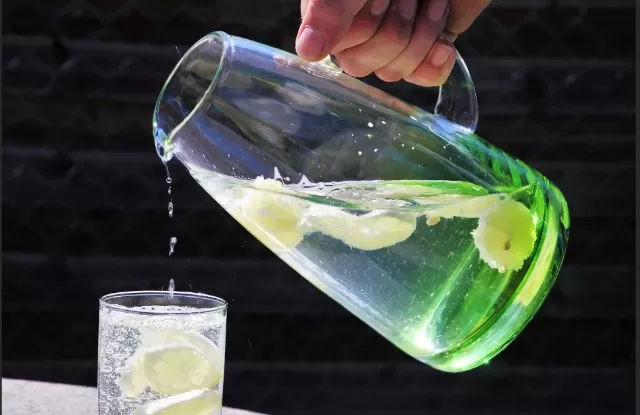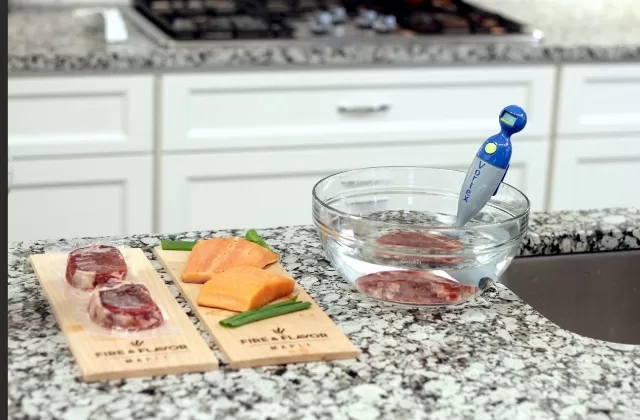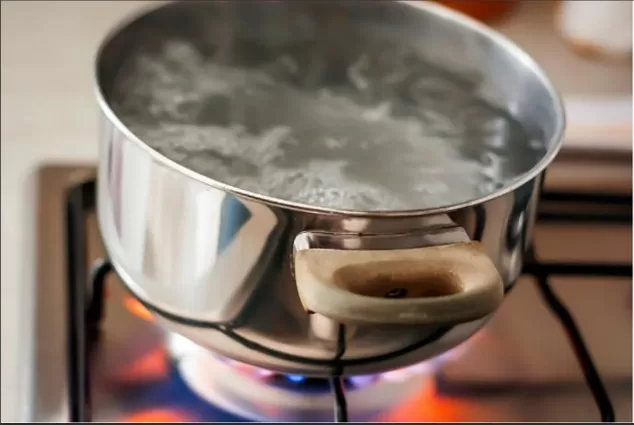Boiling Water Hacks: Surprising Household Uses. Water, an omnipresent resource, flows abundantly across most of the United States.
Its safety and availability often lead us to take it for granted as we utilize it for drinking, cooking, cleaning, bathing, and recreation. However, you might be surprised to discover that by simply boiling water, you can unlock a whole new realm of possibilities for its usage throughout your home and garden. It’s important to exercise caution though, as boiling water can cause burns. To protect yourself from potential hazards, wear closed-toe shoes, appropriate clothing, and gloves when handling hot water. Now, let’s delve into the ingenious ways boiling water can be utilized in various aspects of your daily life.
Efficient and Eco-Friendly Techniques for Eliminating Weeds Naturally

Discover the power of nature in combating unwanted weeds with our effective natural weed killer methods.
Harnessing the potency of boiling water, this approach offers a simple and environmentally friendly solution for eradicating common weeds that stubbornly emerge from the crevices of your sidewalks and driveways. By employing this technique, you can effectively target annual weeds like meadow grass, groundsel, creeping wood sorrel, chickweed, and willow herb, ensuring their complete elimination.
While boiling water works wonders against most annual weeds, certain perennial varieties with resilient taproots and broad leaves, such as dandelions, thistles, mallow, and dock weeds, may require additional treatments.
Rest assured, our comprehensive guide provides you with further strategies to tackle these persistent offenders, ensuring a weed-free environment.
From simple yet powerful approaches to managing annual growth to specialized techniques tailored for perennial nuisances, our natural weed killer methods equip you with the knowledge and tools to maintain a pristine landscape without relying on harmful chemicals.
Embrace the wonders of nature and reclaim your outdoor spaces with these sustainable and effective weed control solutions.
Efficient and Safe Techniques for Clearing a Clogged Drain
When faced with a pesky clogged drain, you can employ a simple and effective method using boiling water to swiftly restore the flow.
By following a few easy steps, you can tackle minor drain blockages without the need for harsh chemicals or expensive tools.
To begin, ensure that there is no standing water in the clogged area.
This can be accomplished by using a bucket or towel to remove any excess water. Once the drain is free from standing water, prepare a pot or two of boiling water.
Caution should be exercised when choosing the temperature of the water based on the type of pipes you have.
If you have metal pipes, it is safe to pour the boiling water directly into the drain. However, for PVC pipes, it is important to avoid using boiling water, as it can cause damage.
In this case, hot tap water should be used instead.
Once you have determined the appropriate temperature, carefully pour the boiling water or hot tap water into the drain, aiming for the center to ensure maximum coverage.
The hot water works by loosening and dissolving accumulated grease, Soap Scum, and other debris, helping to clear the blockage and restore proper drainage.
It’s important to note that while this method is effective for minor clogs, it may not be suitable for more severe blockages or those caused by objects lodged in the pipes.
In such cases, it is advisable to seek professional assistance or employ alternative methods.
Say goodbye to the frustration of a clogged drain and embrace this efficient and safe technique using boiling water, providing a quick solution to keep your pipes running smoothly.
Rapidly Defrost Frozen Foods with Care and Precision

When time is of the essence and you need to thaw frozen food quickly, the microwave often proves to be a reliable ally.
However, it’s important to recognize that while this compact and powerful appliance can efficiently thaw certain foods, it may not be suitable for every frozen item in your kitchen. For instance, delicate foods like frozen vegetables or fruits can easily lose their texture and become mushy when microwaved.
Fear not, for we have a better method to defrost these delicate culinary treasures.
To thaw delicate foods with precision and maintain their integrity, the boiling water technique comes to the rescue.
Follow these simple steps to ensure a gentle and even thawing process:.
Prepare a container that is safe for hot liquids and can accommodate your frozen food.
Make sure it is heat-resistant and won’t be damaged by boiling water.
Bring water to a rolling boil in a kettle or pot.
Carefully pour the boiling water into a larger bowl or basin.
Ensure there is enough water to fully submerge the container holding the frozen food.
Submerge the container with the frozen food into the boiling water, making sure it is fully immersed but remains sealed or covered.
Leave the container in the boiling water for a few seconds at a time, removing it periodically to shake it gently.
This step helps to distribute the heat evenly and promote consistent thawing.
Repeat the process of dipping the container in the boiling water and shaking it gently until the food is fully thawed.
Exercise caution not to leave it in the water for too long to avoid over-thawing or damaging the delicate texture.
By employing this method, you can thaw delicate foods quickly and maintain their desired texture.
Enjoy the convenience of rapid defrosting while preserving the quality of your frozen treasures. Remember, however, that this technique may not be suitable for all types of frozen foods.
For items with specific thawing instructions or those requiring a slower thawing process, it’s always best to refer to the manufacturer’s recommendations or seek specialized advice.
Effortlessly bring frozen foods to their ideal temperature while preserving their deliciousness with the boiling water method—a reliable technique to satisfy your need for speed without compromising on quality.
Effective Stain Removal Using the Power of Boiling Water
When confronted with stubborn stains on various surfaces, harnessing the power of boiling water can often yield impressive results.
By carefully applying this technique, you can effectively tackle certain types of stains and restore the pristine condition of your fabrics, table linens, clothing, and even carpets. Read on to discover how to remove common fruit stains and address them accordingly.
Fruit stains, caused by raspberries, blueberries, blackberries, strawberries, watermelon, and grapes, are notorious for their vibrant pigments.
However, fear not, as these stains are excellent candidates for treatment with boiling water. Whether it’s your favorite tablecloth, a cherished garment, or a carpeted area, you can follow the appropriate steps for effective stain removal.
For Table Linens and Clothing:.
Bring a pot of water to a rolling boil on your stove.
Immerse the stained area of the fabric into the pot of boiling water, ensuring it is fully submerged.
Allow the fabric to soak in the boiling water until the stain is completely gone, periodically checking its progress.
Once the stain has vanished, carefully remove the fabric from the pot, taking precautions to avoid burning yourself.
Rinse the treated area under cold water to remove any residual traces of the stain.
Launder the fabric as usual to ensure a thorough cleaning.
For Carpets:.
Use pot holders or oven mitts to handle a pot of boiling water safely.
Carefully remove the pot from the stove and carry it to the stained carpet area.
Gently pour a small amount of the boiling water directly onto the stain, taking care not to saturate the carpet excessively.
Keep sponges and towels nearby to blot up any excess water and prevent damage to the carpet.
Repeat the process of pouring boiling water and blotting until the stain is completely removed.
Allow the carpet to air dry, and if necessary, use a Vacuum Cleaner to fluff up the fibers.
By utilizing the power of boiling water, you can bid farewell to those pesky fruit stains, whether they’re on your fabrics or carpets.
Embrace this efficient method to restore the pristine appearance of your belongings. Remember to exercise caution when handling boiling water and take appropriate measures to protect yourself and the surfaces you’re working on.
Revel in the satisfaction of stain-free fabrics and carpets as you unleash the potency of boiling water to conquer those challenging blemishes.
Soothing Relief for Congested Sinuses

Whether you’re battling a cold, seasonal allergies, or simply dealing with nasal congestion caused by household chores like dusting and vacuuming, finding relief for clogged sinuses is crucial.
Fortunately, the steam generated from boiling water can provide a natural and effective solution, helping to alleviate congestion and restore easy breathing. Follow these steps to safely and comfortably clear your sinuses:.
Begin by boiling water on your stove, creating a steam source that will help loosen congestion.
Once the water has reached a rolling boil, carefully transfer the hot liquid to a cup or bowl with a wide opening.
Choose a container that can comfortably accommodate your face while allowing the steam to rise.
Find a comfortable and quiet space where you can relax.
Place a towel over your head, creating a tent-like structure that covers both your head and the bowl or cup.
Lean your head down over the bowl, positioning your face a safe distance away from the hot water.
Ensure that your face is inside the towel tent, allowing the steam to concentrate around your nasal area.
Breathe deeply and slowly, inhaling the warm steam.
Allow the steam to penetrate your nasal passages, providing soothing moisture that helps to relieve congestion.
Take caution never to place your head directly over a pot of boiling water on the stove.
Superheated steam can cause burns and injuries. It’s essential to create a safe and controlled environment by using a separate cup or bowl to hold the steaming water.
By practicing this technique, you can experience the benefits of steam inhalation to alleviate congestion and promote clearer breathing.
The warm steam works to hydrate and soothe irritated nasal passages, helping to reduce inflammation and relieve discomfort. Remember to take breaks if necessary, and discontinue the steam treatment if you feel any discomfort or dizziness.
Breathe freely and find comfort in the power of steam to provide relief for your clogged sinuses.
Embrace this natural and gentle method to help you feel revitalized and refreshed.
*The information is for reference only.